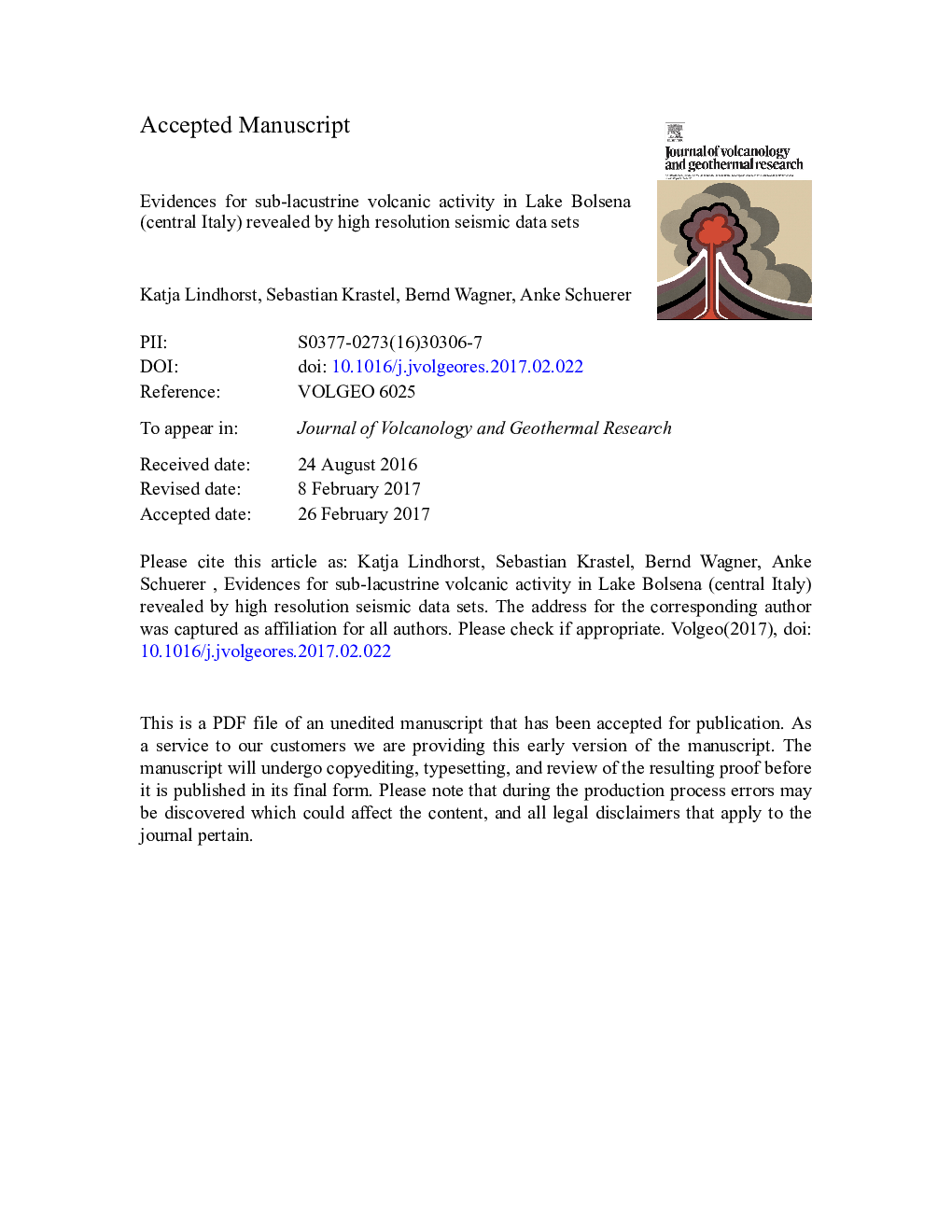| Article ID | Journal | Published Year | Pages | File Type |
|---|---|---|---|---|
| 5783676 | Journal of Volcanology and Geothermal Research | 2017 | 22 Pages |
Abstract
The subsurface structure of Lake Bolsena was imaged up to a sediment depth of ~Â 190Â m, which is estimated to have filled over a period of 333Â kyrs. However, massive pyroclastic flow deposits found in the deeper parts of the basin indicate an initial infill of volcanic deposits from two adjacent younger calderas, the Latera (W) and Montefiascone (SE) calderas. Our data suggest that the caldera has a long history of active volcanism, because the lacustrine sediments show post-sedimentary influences of geothermal fluids. We mapped several mound structures at various stratigraphic depths. Two volcanic structures outcrop at the modern lake surface implying recent activity. One of these structures is hardly covered by sediments and has a crater-like feature in its summit. The other structure shows a pockmark-like depression on top. Another observable feature is a partially sediment filled crater located in the western part of the lake which further implies the existence of a magma chamber located beneath the Bolsena caldera. Since the late Pleistocene and Holocene, the sedimentation was mainly hemipelagic evidenced by a sediment drape of up to 10Â m thick sediment drape on the uppermost sediments. Beneath the drape we found evidence for a distal tephra layer likely related to an explosive eruption from the Campanian Volcanic Province occurring as the Neapolitan Yellow Tuff. Our new geophysical data set is a valuable record with a potential to constrain the sedimentary and volcanic evolution of the Vulsini Volcanic District in areas that have not been assessed previously due to logistical challenges of conducting surveys in water-filled settings.
Related Topics
Physical Sciences and Engineering
Earth and Planetary Sciences
Geochemistry and Petrology
Authors
Katja Lindhorst, Sebastian Krastel, Bernd Wagner, Anke Schuerer,
